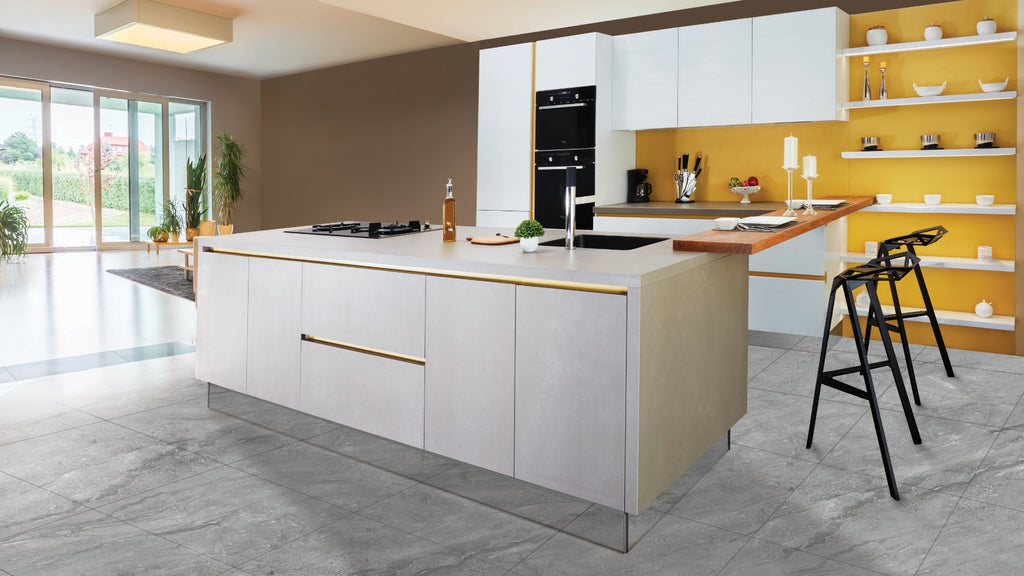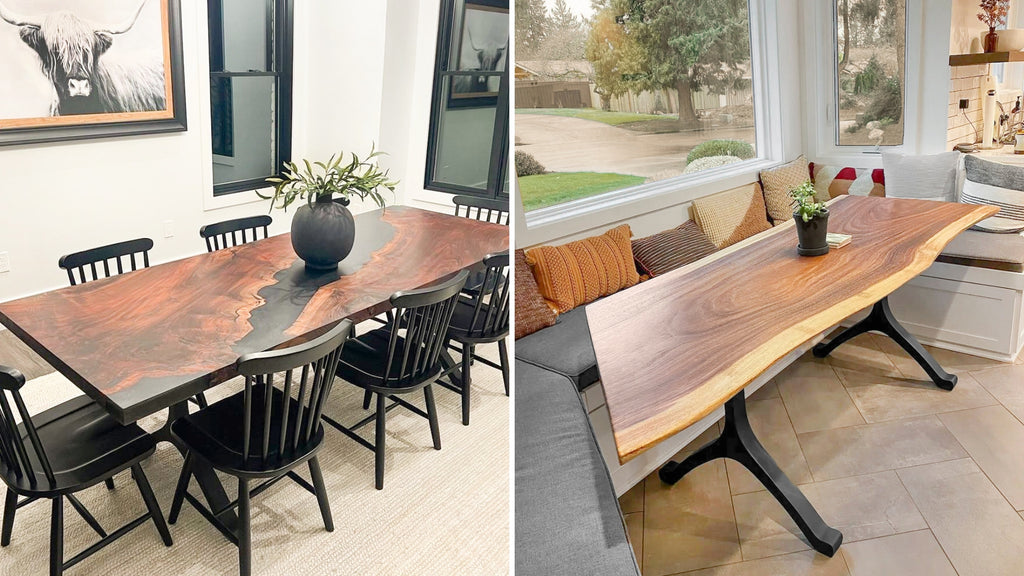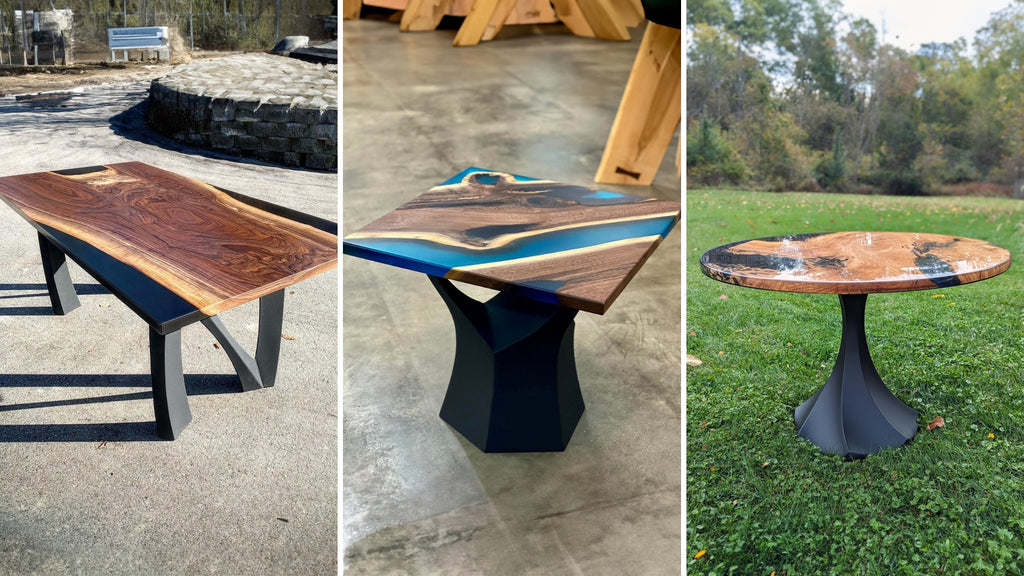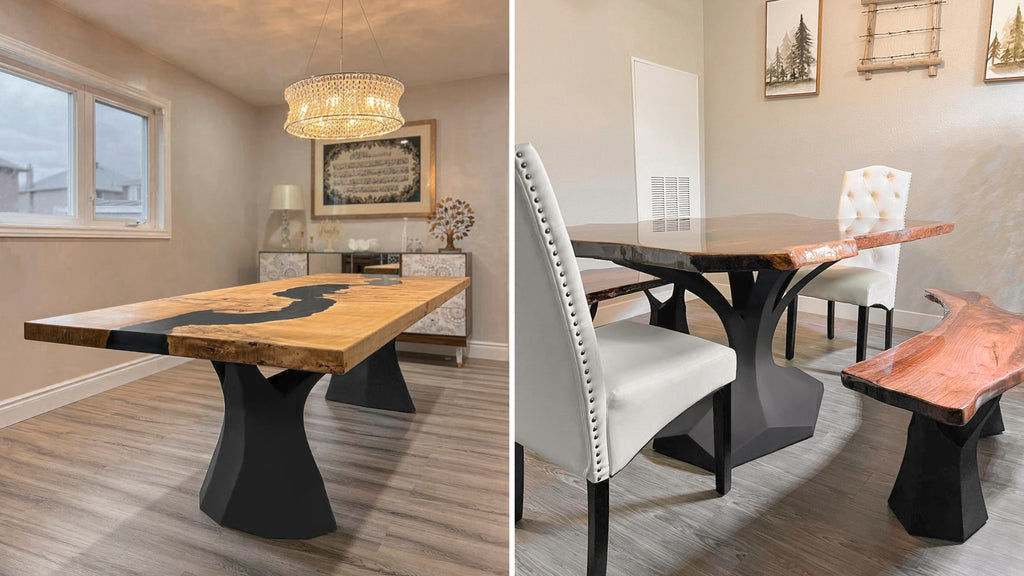How to Measure Space for Your Dining Table
Original article: https://flowyline.com/blogs/for-diy-ers/how-to-measure-space-for-your-dining-table
Choosing the right dining table for your home is not just about style and design. It's also about ensuring that it fits perfectly into your dining area. Whether you have a spacious dining room or a cozy breakfast nook, measuring your space correctly is crucial to ensure that your dining table is a harmonious addition to your home. In this blog, we'll guide you on how to measure spaces for your dining table, so you can make an informed decision that complements both your lifestyle and the aesthetics of your home decor.
 The dining table is an indispensable item in every living space
The dining table is an indispensable item in every living spaceAssess the Dining Area
Before you start measuring, take a good look at your dining area and consider the following factors:
Room shape
Is your dining area square, rectangular, round, or irregularly shaped? The shape of the room will influence the size and shape of your dining table. If your dining area is small or narrow, a console table that stands next to the kitchen island will be the best choice to enhance the aesthetic value and functions of your table at once.
Existing furniture
Take into account any existing furniture in the dining area, such as sideboards, cabinets, or a buffet. These pieces will affect the available space for the table.
Walkways
Ensure there's enough space for comfortable movement around the table, allowing guests to pull out chairs and move freely. Aim for a minimum of 36 inches between the table and walls or other furniture.

Consider the room shape and other aspects when selecting a dining table for your area
Credit: Saviesa Home
Measure the Available Space
Once you've assessed your dining area, it's time to take accurate measurements. Here's what you'll need to measure measure space for your dining table:
Room dimensions
Measure the length and width of the dining area. Be sure to measure from wall to wall, accounting for any recesses or protrusions.
Chair space
To ensure comfortable seating, allow a minimum of 24 inches of space for each chair at the table. If your chairs have arms, you may need to account for extra space.

To guarantee comfortable seating, measure the room size and chair space
Credit: Flowyline Design
Table shape
The shape of the table is one of the crucial factors for a striking dining room. Measure the dimensions for rectangular, square, or round tables accordingly. Each shape of the table has its meaning and functions:
- Rectangular tables are the most common shape for dining tables, as they can seat many guests and fit well in long or narrow rooms. They also have a linear shape that allows for ample room to walk around the table.
- Square tables are perfect for square rooms and smaller spaces. They may create a sense of equality and intimacy among those seated around them. To make extra room, combine this table form with other square tables. However, because square tables may not give enough legroom or surface area for everyone, they may limit the number of people who can sit comfortably. They can also take up more space and may be difficult to fit into round or curved spaces.
- Round tables are a great choice for round and curved rooms. They can fit well in any space and don't have any corners or edges.
- Oval tables are a medium between rectangular and round shapes so they have a softer aesthetic that provides ample dining spaces with an inviting feeling. They can also accommodate more people and more items thanks to the larger and longer surface area than round and square tabletops. However, oval tables can also be less convenient to reach across or serve from, as they have a wider center than the ends.

Determine Table Size
Now that you have accurate measurements, you can choose the right dining table size based on your dining area and the number of family members. Here are some general guidelines:
For rectangular tables
- Allow at least 24 inches of table width per person.
- For a standard rectangular table, a length of 72-96 inches works well for seating 6-8 people.
- If you have a larger dining area and need to accommodate more guests, you can consider an extension table.
For square tables
- Square tables can be a great space-saving option.
- A 36-inches square table seats 4 people comfortably.
- Larger square tables can accommodate 8 or more guests.
For round tables
- A 48-inches round table can typically seat 4-6 people.
- A 60-inches round table is suitable for 6-8 people.
- For more guests, you can consider a round table or an oval table.

Measuring your dining space accurately is a crucial step in choosing the perfect table for your living space. By taking precise measurements and considering your seating needs, you can ensure that your dining table not only fits seamlessly into your space but also enhances the overall dining experience. Through this blog, we hope that you find out the methods and tips on how to measure spaces for your dining table. Let's make your dining area welcoming and cozy for beloved family members and friends.


Comments
Post a Comment